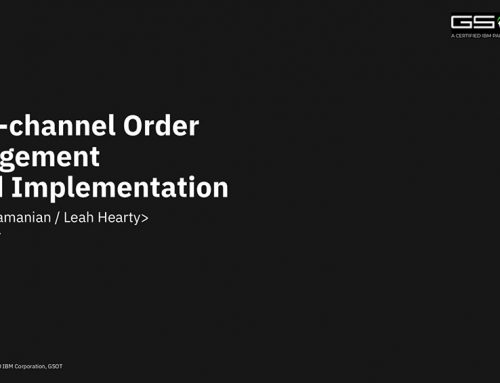The Inventory Conundrum Part 1 –
What is Going on With All That Inventory?
Ever since the first man started trading good in the farmers market as early as 5000 BC his primary problem has been the ‘inventory’
“What if I don’t take enough to sell? what if I take too much to sell?”
It’s true that we have come a long way since these first farmers to now where pretty much everything is sold on the Internet.
Today a typical retailer has orders flowing in from multiple channels such as their store, website, market place website and call centre. Conversely they also provide multiple fulfilment types such as:
- Buy online-pickup in store
- Buy online-deliver to home
- Reserve online-pay and pickup in store
- Reserve online – deliver to home and pay on delivery
- Order in store – deliver to home
- Order in store – pickup from another store
In addition you have layered over this complexity the desire of the consumer who wants to make sure they can return or exchange anything anywhere.
To overcome the challenges and to meet these expectations retailers have to provide a seamless omni channel experience to the consumer.
For those of you who have been working in the e-com industry long enough, the following questions should be all too familiar!
- Why is there been too many short picks in this warehouse?
- Why do we keep overselling/underselling on our website?
- Why is there so much inventory of this item lying around in this warehouse?
- Why is there so much inventory in my store and yet I am getting out of stock message for the same item in my website?
- How much inventory of item A should I stock in warehouse X for the next black Friday sale? Or should I stock more in Warehouse Y?
We have a myriad of software, hardware, humans and machines interacting with one another to get those flowers you ordered for your husband’s birthday or the iPhone you ordered for your son’s first day at the university to reach them on time.
To provide these seamless omni channel experiences, a state of the art order management system is a fundamental requirement. Without an efficient OMS and WMS working seamlessly together, it is impossible to provide a pleasant omni channel experience to the consumers.
In the absence of an efficient OMS and WMS, the retailers quickly lose track of their inventory. An accurate inventory picture must be presented to all the order capturing channels in a timely manner.
Let’s explore an example:
- Baker places an order for a fast selling branded perfume to be delivered to his wife as a surprise gift on her birthday next week.
- When he placed the order, the website displayed the product as in-stock.
- The next day Mr. Smith logs in places an order of 10 quantity for the same perfume for immediate delivery.
- Smith’s order gets scheduled and released as it is for immediate delivery. The warehouse picks, pack and ships the order.
- Eventually when Mr. Bakers order is released to warehouse a day before Mrs. Bakers birthday, they find that there is no stock and mark the order as short pick. It is too late to source the order from another warehouse and meet the promised delivery date.
- Consequently, we have an angry Mr. Baker, a disappointed Mrs. Baker and a negative review for the retailer on Google and Trustpilot.
The importance of an efficient OMS in avoiding situations like above cannot be emphasized enough. How do you define an ‘efficient’ OMS? Essentially an efficient OMS is a system that is developed keeping in mind people like Mr. Baker and Mr. Smith – The consumers.
At many retailers, so much design and the process of the OMS have gone into satisfying the other aspects/functions of the retailer like the financial system, the ERP system, the reporting system etc… that the OMS loses track of the most important thing – the consumer.





Leave A Comment